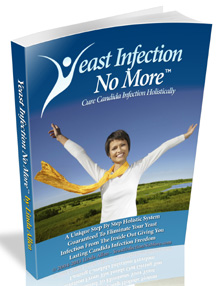Yeast Infections and Antibiotics
Free Video Reveals 1 Weird Tip To Quickly Cure Your Candida Overgrowth & Enjoy Permanent Freedom From Yeast Infections In As Little As 12 Hours - Guaranteed!
>> Yeast Infection Guaranteed Treatment Click Here <<
A leading cause of a yeast infection is the use of antibiotics. These drugs kill off bacteria that usually keep the yeast in check. The yeast population can then grow too quickly for your immune system to control it.
When this happens, yeast may then change over to its infectious form and go on the attack.
Women quite often experience their first yeast infections after taking a prescription for antibiotics, or after using soap containing disinfectants. Other women have no problems with most antibiotics, but may get yeast infections if they take specific types of antibiotics, or if they are treated for an extended time for chronic problems like acne.
Toddlers often have oral thrush after a course of antibiotics.
Some Antibiotics Can be Avoided
Some condoms have a spermicide containing nonoxynol-9, which has been shown to increase the incidence of yeast infections. If you get a yeast infection after having sex using a condom, check the package to see if it has an antibiotic or spermicide. If it does, you might consider changing brands.
Our food supply is also full of antibiotics, because beef and poultry are fed these drugs on a regular basis to keep them healthy in crowded conditions. Some health practitioners believe the widespread use of antibiotics in both humans and animals is the cause for both the recent increase in drug-resistant bacteria, and the increased incidence of yeast infections.
If you have a child who gets oral yeast infections and there is no obvious cause, (such as eating lots of sugar), you may want to switch to certified organic beef, chicken and eggs. (?Free range? is not a regulated term, and does not guarantee that the chicken or egg is antibiotic free.)
Many people don?t realize that soap containing disinfectants can remove the beneficial bacteria from their skin, right along with the germs. If you get yeast infections often and you use one of the popular brands of disinfectant soap, you may want to switch to a non-medicated brand.
Some herbal remedies intended for a condition called "systemic candidiasis" may act as mild antibiotics, and kill the beneficial bacteria in the gut right along with the yeast. If you often have vaginal yeast infections or thrush, you should talk to your doctor before using one of these remedies. You do need those bacteria, and yogurt can only replace some of the species of bacteria naturally living in your intestines.
Replacing Your Beneficial Bacteria
When you need to use an antibiotic because you have a bacterial infection or other illness, you can replace some of your bacteria, but not all of them, by eating non-sweetened yogurt that contains active bacteria. Many commercial brands do not contain live acidophilus, so be sure to read the label.
If you can?t tolerate yogurt, a dietary supplement that contains acidophilus may also be helpful to bring your body?s yeast and bacteria back into balance, so you will be less likely to suffer from a yeast infection after the use of antibiotic medications.
Remember that antibiotics are only one of at least 17 different things that can trigger a yeast infection. Some of the other things on that long list can be avoided, but not all of them. Protect yourself against yeast infections by learning as much as you can about this common condition.
Jonni writes full-time about important health issues, including yeast infections and antibiotics. For a Free Report called ?4 Important Facts About Yeast Infections,? visit her site at http://www.YourYeastInfection.com
Labels: a_yeast_infection_look_like, acidophilus_yeast_infection, boric_acid_and_yeast_infection, breast_yeast_infection, canine_yeast_infection

